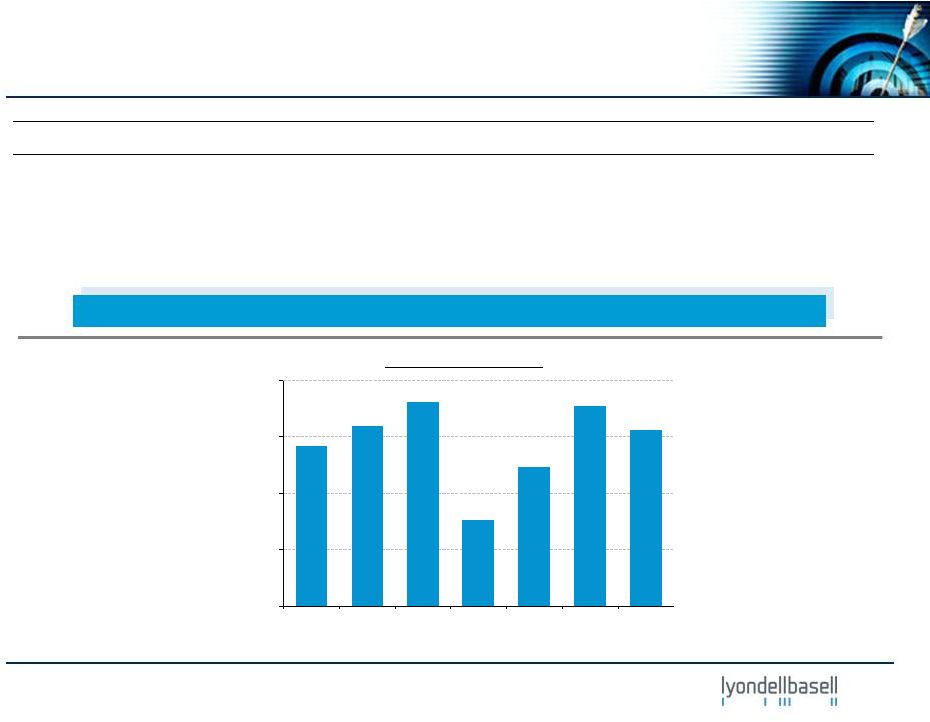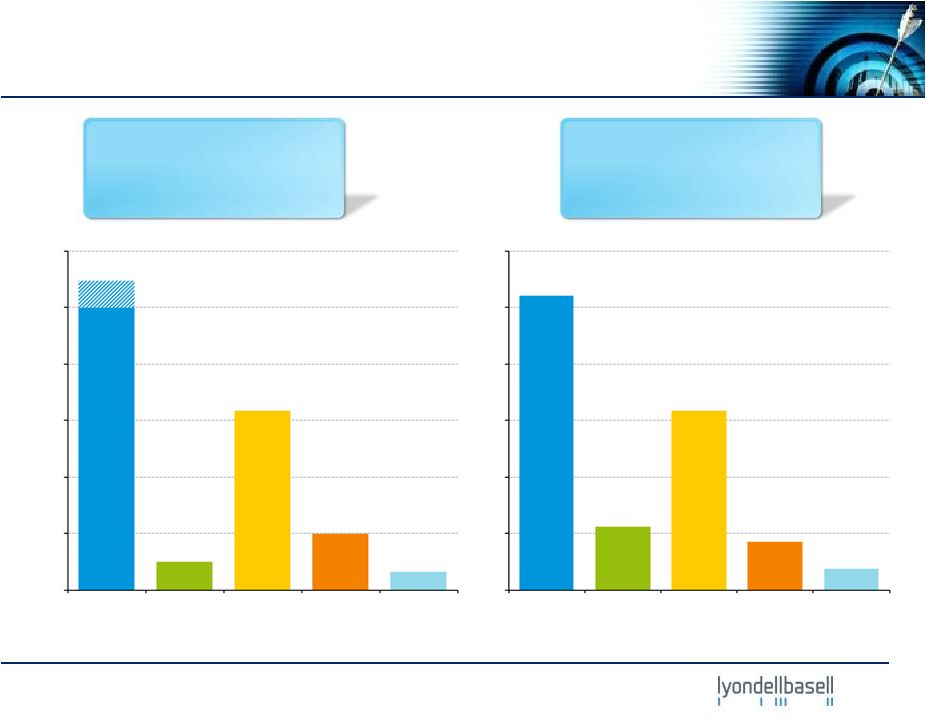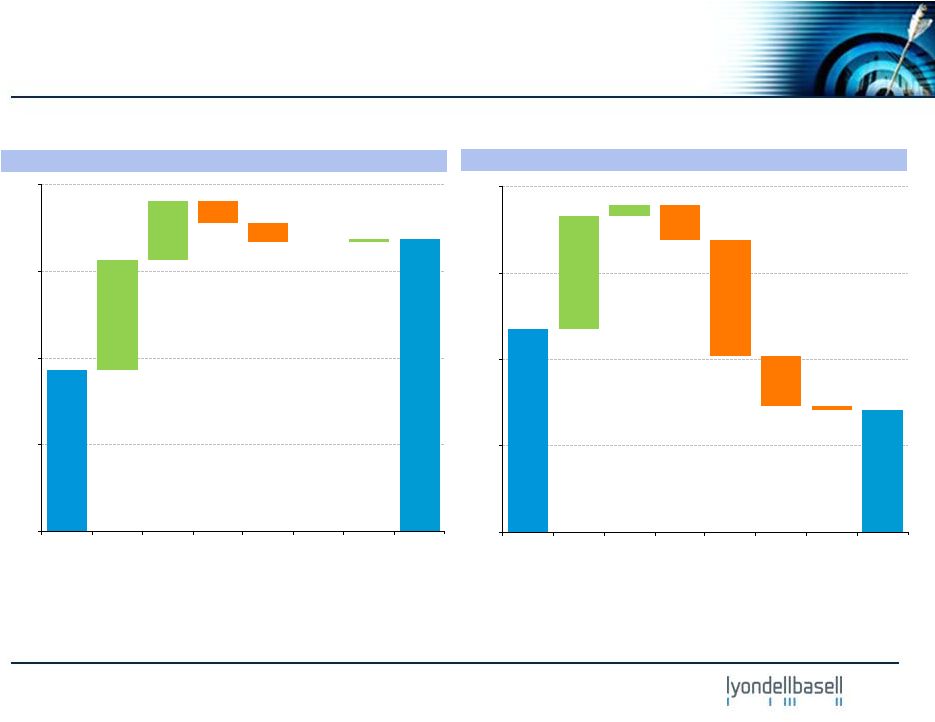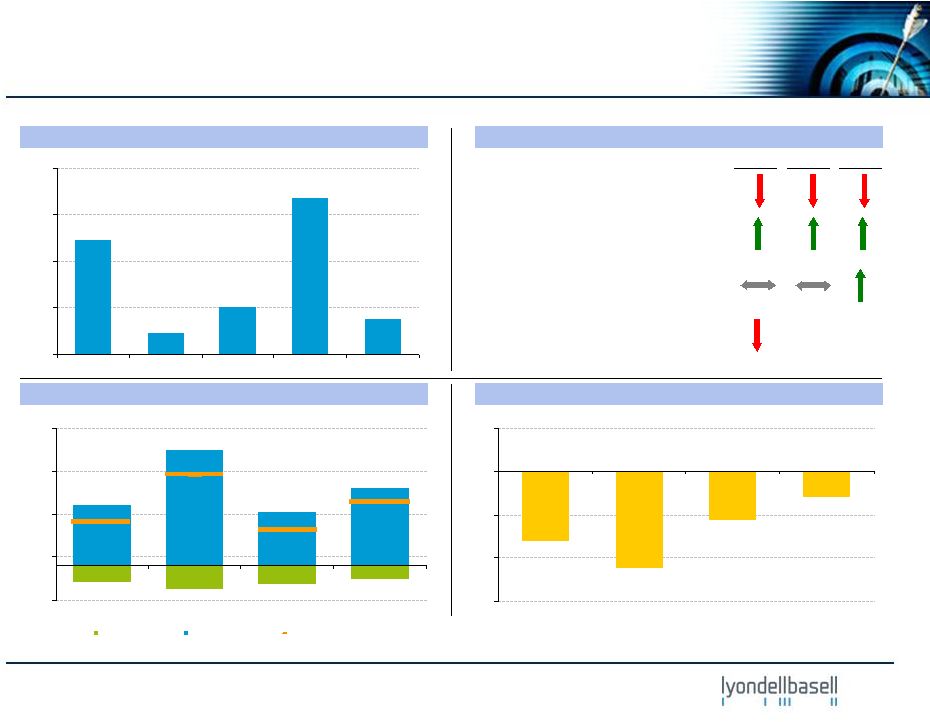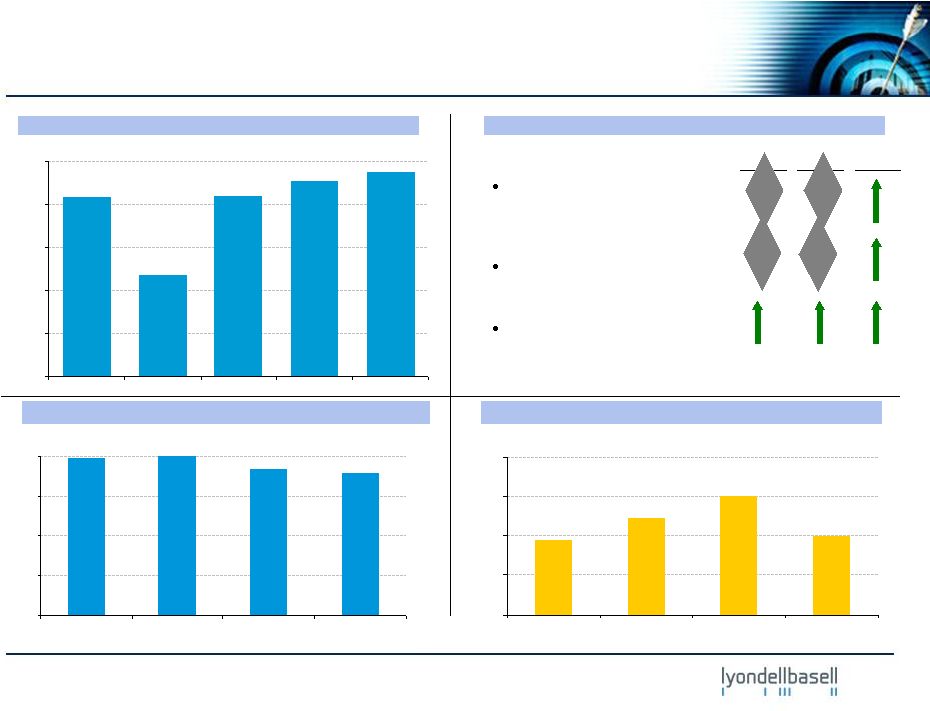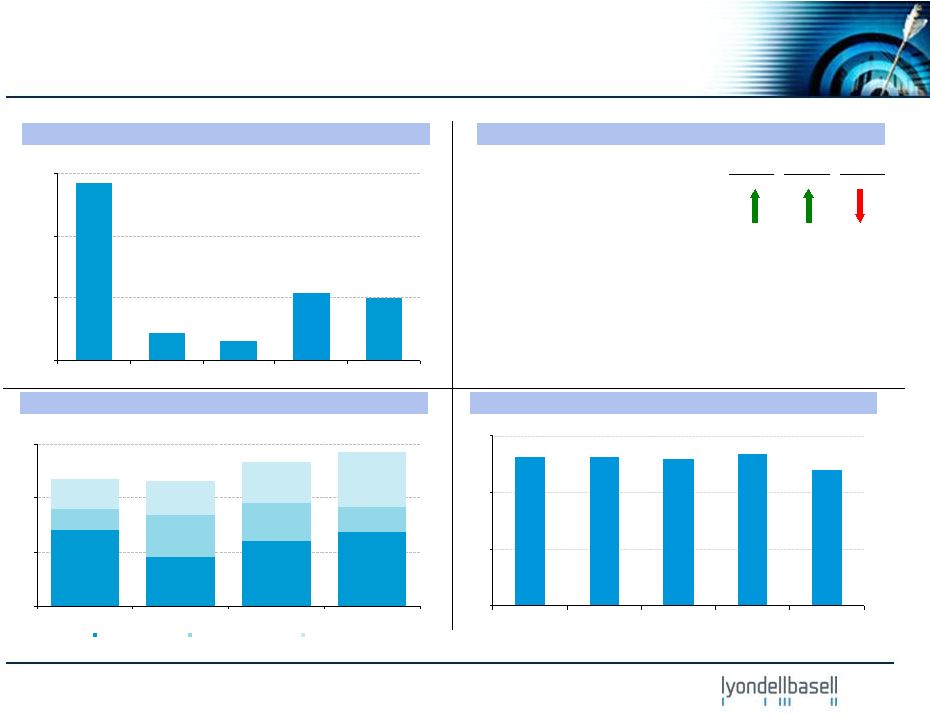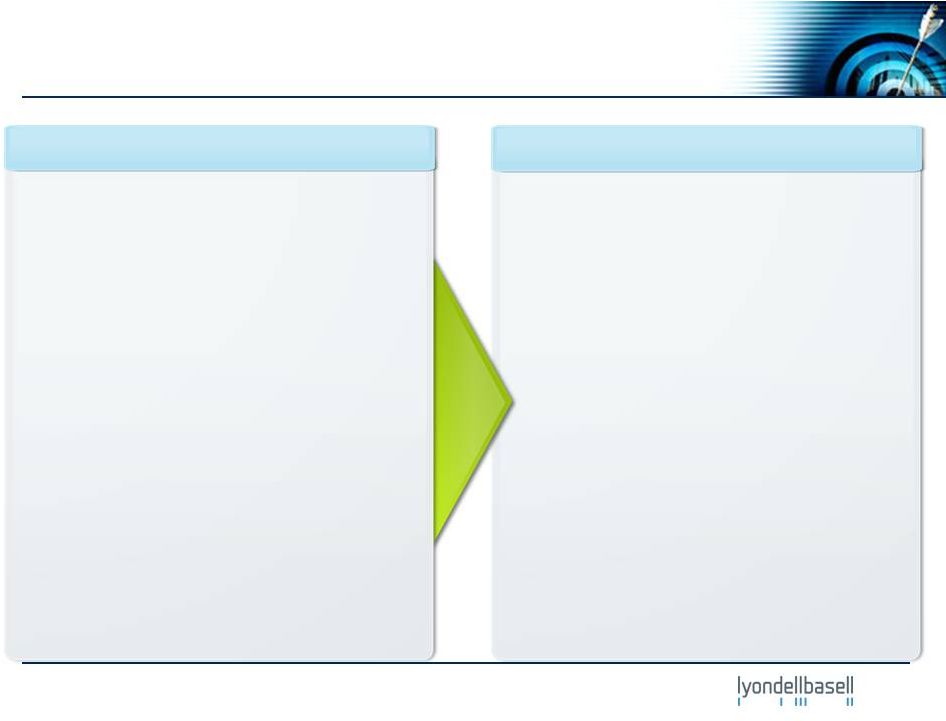lyondellbasell.com Information Related to Financial Measures 3 We have included EBITDA in this presentation, which is a non-GAAP measure, as we believe that EBITDA is a measure commonly used by investors. However, EBITDA, as presented herein, may not be comparable to a similarly titled measure reported by other companies due to differences in the way the measure is calculated. For purposes of this presentation, EBITDA means net income before net interest expense, income taxes, depreciation and amortization, reorganization items, income from equity investments, income(loss) attributable to non-controlling interests, net income (loss) from discontinued operations, plus joint venture dividends, as adjusted for other items management does not believe are indicative of the Company’s underlying results of operations such as impairment charges, asset retirement obligations and the effect of mark-to-market accounting on our warrants. The specific items for which EBITDA is adjusted in each applicable reporting period may only be relevant in certain periods and are disclosed in the reconciliation of non-GAAP financial measures. EBITDA should not be considered an alternative to profit or operating profit for any period as an indicator of our performance, or as an alternative to operating cash flows as a measure of our liquidity. See Table 9 of our accompanying earnings release for reconciliations of EBITDA to net income. While we also believe that free cash flow (FCF) and book capital are measures commonly used by investors, free cash flow and book capital, as presented herein, may not be comparable to similarly titled measures reported by other companies due to differences in the way the measures are calculated. For purposes of this presentation, free cash flow means net cash provided by operating activities minus capital expenditures and book capital means total debt plus stockholders’ equity plus minority interests. | 


